Cooking is an art and a science!
Our kitchen is the place where the fate of our health is decided. To stay healthy, we all must prepare meals and menu thoughtfully. No matter how many fresh or organic ingredients you bring to the kitchen, you will lose all their potential benefits if they are prepared carelessly and in an unhealthy way. So, cooking techniques and cooking gadgets are the lifelines of any household.
Your cooking utensils also play a vital role in keeping your interest in cooking alive. Durable, handy, simple, efficient, and heat resistant cooking utensils make cooking a joyful chore as they help to minimize the time you spend in the kitchen.
Ever wondered how people who have taken up cooking as their profession enjoy it doing day after day for years altogether? Of course, with the help of adequate and efficient cooking equipment and tools.
With such a wide range of cookware available in the market, which one you think will be apt for your kitchen?
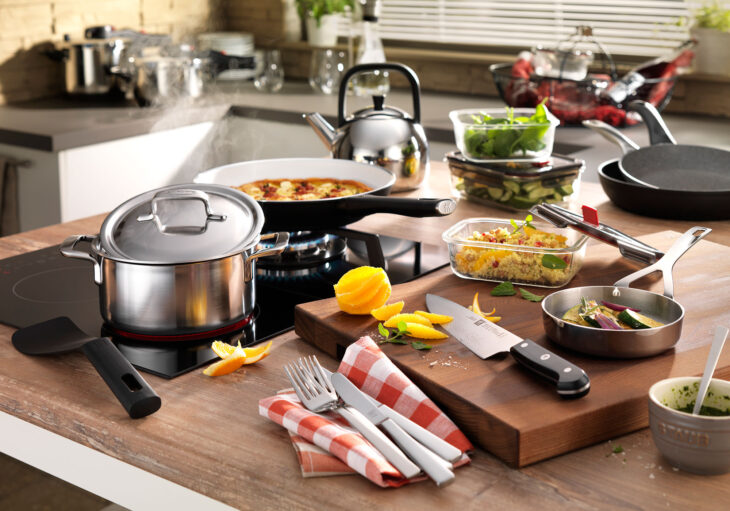
Source: zwilling
Yes, the market is flooded with an immense range of cookware, and several heat-resistant cookware is available to meet the requirements of various segments of the population. The list of heat-resistant cooking material is as follows:
-
Contents
- Cast-iron cookware
- Stainless steel cookware
- Hard anodized cookware
- Glass cookware
- Ceramic cookware
- Enamel cookware
- Cooper cookware
- Aluminum cookware
- Non-stick (Teflon) cookware
- Why stainless steel cookware is a better option?
- What are the factors that we should consider before purchasing stainless-steel cookware?
Cast-iron cookware
It requires proper care and maintenance. If seasoned correctly, these are naturally non-stick without using any synthetic coating. Cast iron cookware is heavy and retains heat for a longer duration, which also helps to keep the food hot for long. Handles of this cookware get very hot, making it difficult to hold these pans. The food cooked in it may sometimes taste metallic and acidic foods can also react with its material. It rusts easily, so avoids boiling water in it.
-
Stainless steel cookware
These utensils, with a thick copper or aluminum bottom, distribute heat evenly that helps to cook the food nicely. Stainless steel cookware is non-reactive, long-lasting, and safe to use. But on the other hand, it’s heavy to use, pretty expensive and cools and heats slowly. These are particularly useful to prepare acidic foods and require minimum maintenance.
-
Hard anodized cookware
These are durable, strong, easy to clean, conducts heat nicely, and have a non-stick cooking surface. But, hard anodized cookware and also expensive, can react with food, heavy, and not suitable to store food for long.
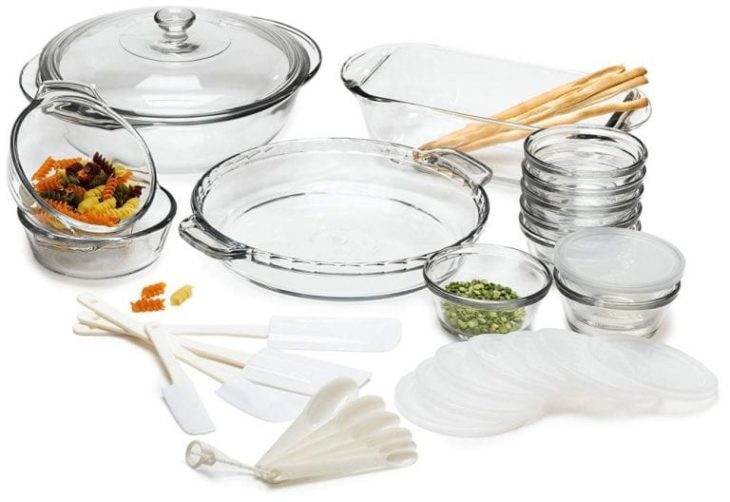
Source: amazon.com
-
Glass cookware
These are nice to look, transparent, and great to serve food. Heat distributes poorly in glass cookware, which makes the food to stick and burn easily. These are difficult to handle, as they may chip and leave shards of glass in the food. These are great to use in a microwave or in an oven. However, glass is not the best option for deep-frying or stovetop cooking.
-
Ceramic cookware
These are pretty looking and easy to clean. However, these tend to chip very easily, are not very durable, and food sticks while cooking in these pans. The porcelain glaze used in ceramic cookware contains lead, which can harm health.
-
Enamel cookware
These cookware conduct heat well and are naturally non-stick and durable. The enamel coating tends to chip off easily, which can result in the rusting of food. Food cooked in it can scorch easily and cools fast.
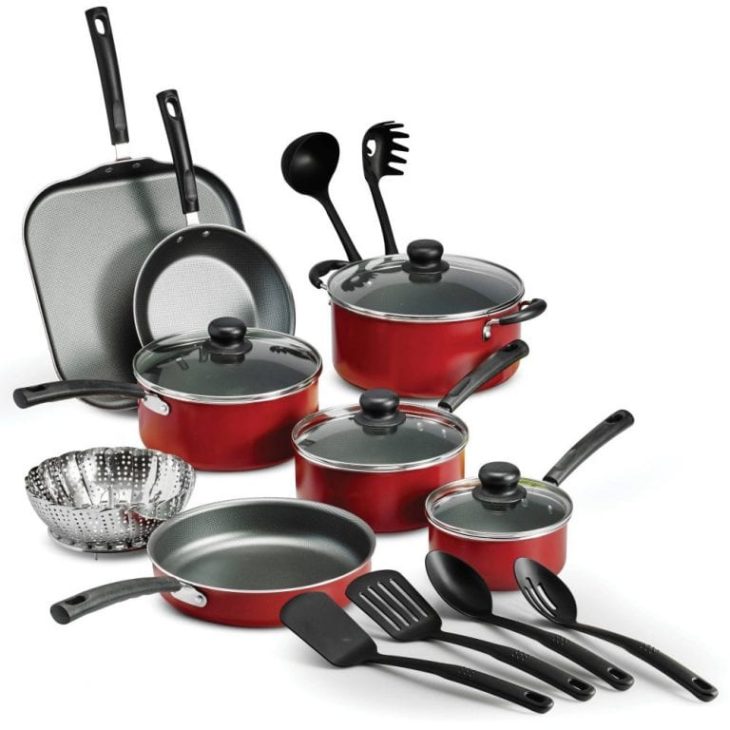
Source: walmart.com
-
Cooper cookware
Used many years ago, they have an old-world feel and distributes heat evenly. The tin coating can break easily to react with both alkaline and acidic food and give the food a metallic taste. Also, many foods tend to react with copper. They are difficult to maintain and are very expensive.
-
Aluminum cookware
These are excellent conductors of heat and are rust-free and corrosion-free. Aluminum cookware is relatively inexpensive, lightweight, and this very soft metal tends to bend very easily. If used regularly, high aluminum toxicity may result in Alzheimer’s. The chemical reaction between food and pan may occur, which may result in metallic taste and food discoloration.
-
Non-stick (Teflon) cookware
It requires the use of very little oil or fat to prepare food, and its non-stick coating does not let the food stick to the pan. This cookware tends to chip and flake very easily with use, which can be a considerable health hazard. Avoid cooking at a very high temperature in these as they tend to emit harmful fumes. You should know that there are two types of non-stick cookware. The first one is PTFE or Polytetrafluoroethylene and there are some growing concerns regarding its safety. The second type is sol-gel ceramic cookware which is pretty much a new type of cookware. The most important fact you should know about sol-gel ceramic cookware is that it is nontoxic, but unfortunately, it’s not the most durable.
However, if you are looking for just one material to fix all your cooking worries, then stainless steel will be the best choice.
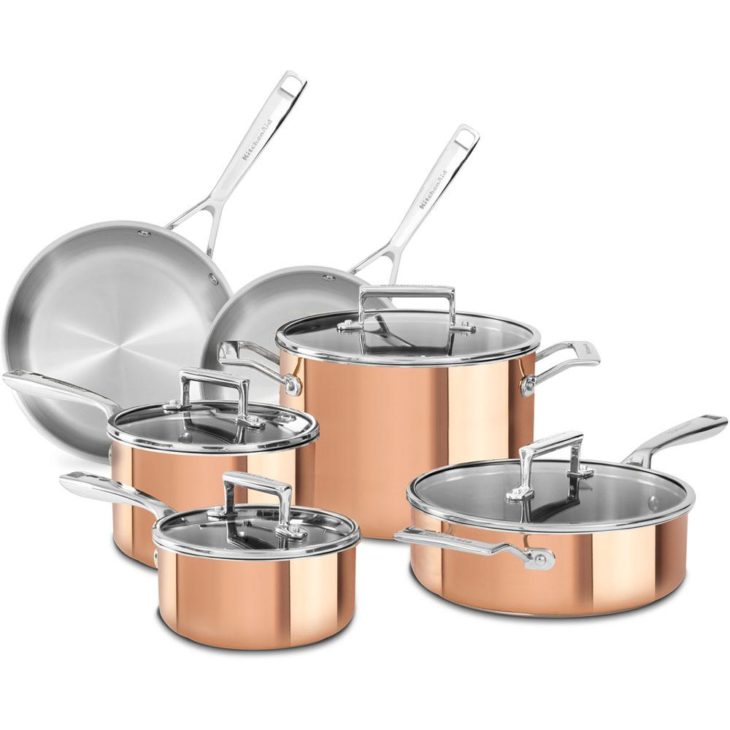
Source: Pinterest
Why stainless steel cookware is a better option?
Stainless steel utensils are
- Durable
- Non-reactive
- Cooks evenly
- Hygienic
- Versatile
- Attractive and stylish
- Safe for health
- Eco-friendly
- Easy to maintain
- Rust-free
- Stain-free
- Non-chippable
- Indestructible
- Lightweight
- Easy to clean
- And reasonably priced!
With such a long list of benefits, stainless steel utensils are pretty sturdy and are usually good to be used generation after generations. No wonder chefs across the world choose stainless steel utensils and tools as an answer for their all cooking problems. Right from making sauces, stir-frying, poaching, draining, cooking, frying, and in the form of knives, peelers, and other kitchen tools, stainless steel is the preferred choice for cooking professionals around the globe.
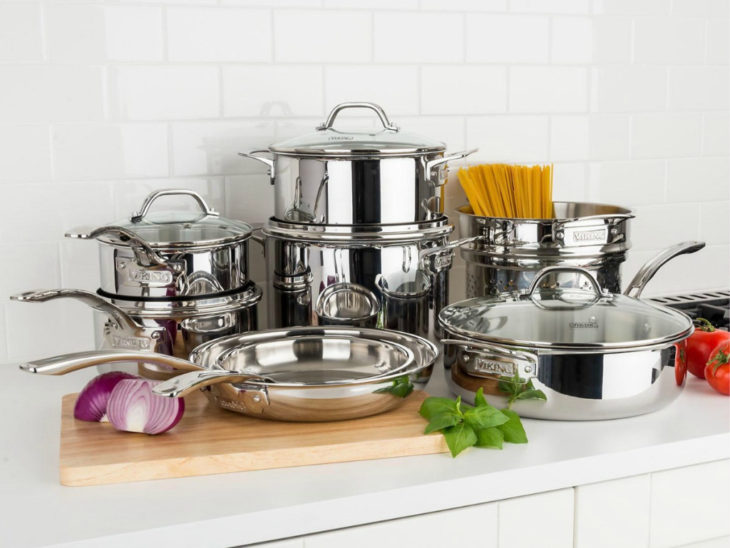
Source: Hip2BeHome
What are the factors that we should consider before purchasing stainless-steel cookware?
You must ensure that your stainless steel cookware must have a thick bonded copper or aluminum base to encourage an even transfer of heat. Check out this guide to get a greater insight regarding the stainless steel cookware that will meet your cooking requirements. Here you will also find a vast analysis and review of the latest stainless steel cookware!
